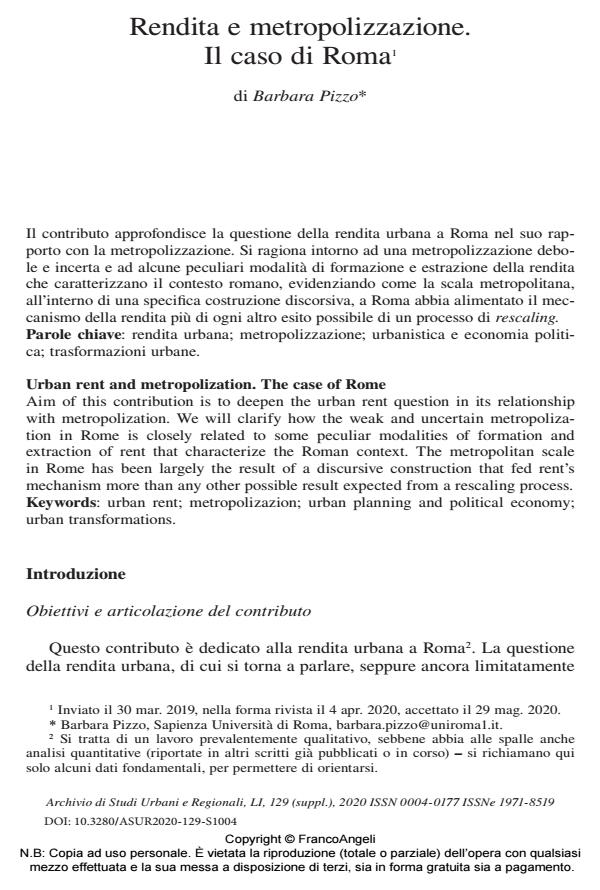Urban rent and metropolization. The case of Rome
Journal title ARCHIVIO DI STUDI URBANI E REGIONALI
Author/s Barbara Pizzo
Publishing Year 2021 Issue 2020/suppl. 129
Language Italian Pages 22 P. 64-85 File size 167 KB
DOI 10.3280/ASUR2020-129-S1004
DOI is like a bar code for intellectual property: to have more infomation
click here
Below, you can see the article first page
If you want to buy this article in PDF format, you can do it, following the instructions to buy download credits

FrancoAngeli is member of Publishers International Linking Association, Inc (PILA), a not-for-profit association which run the CrossRef service enabling links to and from online scholarly content.
Aim of this contribution is to deepen the urban rent question in its relationship with metropolization. We will clarify how the weak and uncertain metropolization in Rome is closely related to some peculiar modalities of formation and extraction of rent that char-acterize the Roman context. The metropolitan scale in Rome has been largely the result of a discursive construction that fed rent’s mechanism more than any other possible result expected from a rescaling process.
Keywords: Urban rent; metropolizazion; urban planning and political economy; urban transformations.
- Promoting Rental Housing Affordability in European Cities Marco Peverini, pp.81 (ISBN:978-3-031-43691-8)
Barbara Pizzo, Rendita e metropolizzazione. Il caso di Roma in "ARCHIVIO DI STUDI URBANI E REGIONALI" suppl. 129/2020, pp 64-85, DOI: 10.3280/ASUR2020-129-S1004